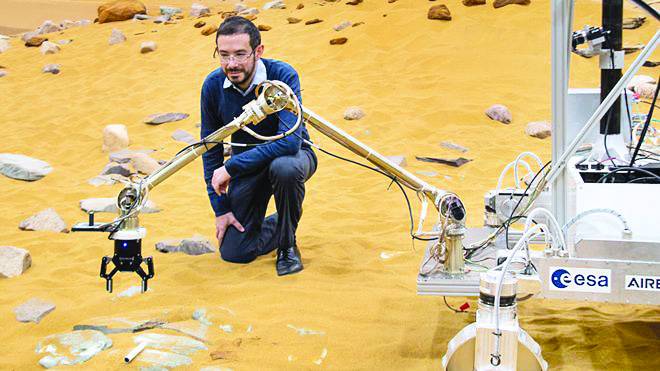LOS ANGELES - British engineers have begun testing technologies that will be needed to bring samples of Martian rock to Earth.
The Airbus team is training a prototype rover to recognise and pick up small cylinders off the ground.
It’s a rehearsal for a key part of a multi-billion-dollar project now being put together by the US and European space agencies - Nasa and Esa.
Returning rock and dust materials to Earth laboratories will be the best way to confirm if life exists on Mars.
It is, though, going to take more than a decade to achieve.
The small tubes - about the size of whiteboard markers - being manipulated by the Airbus prototype represent the Martian samples.
The idea is that these will have been selected, packaged and cached on the surface of the Red Planet at various locations by the Americans’ next big rover, which launches in seven months’ time.
It would then be the job of a later European robot, launching in 2026, to run around and pick up the cylinders. This “fetch rover” would deliver the tubes to a handling station, from where they could be despatched to Earth.
They would arrive home in 2031.
The vision system recognises the tubes and then directs the arm and claw into position
At Airbus’s Stevenage facility, they’ve built a “Mars yard” to simulate the Red Planet’s surface. It’s here that robots can be put through their paces on the sort of terrain they might encounter on Earth’s near neighbour.
Right now, engineers have got a dummy rover practising the business of retrieving packaged rock samples. And, yes, the stand-ins really are whiteboard markers.
A vision-based software system directs a robot arm and claw to move into position over a cylinder. Very slowly, the mechanism reaches down and grabs its target. The exercise works extremely well, even when the tubes are partially buried to mimic the aftermath of a Martian dust storm. But a sandpit in southern England is not quite Mars, where temperatures can be excruciatingly cold and the environment is bombarded with radiation from space. The eventual “flight model” will need to be super-robust.






